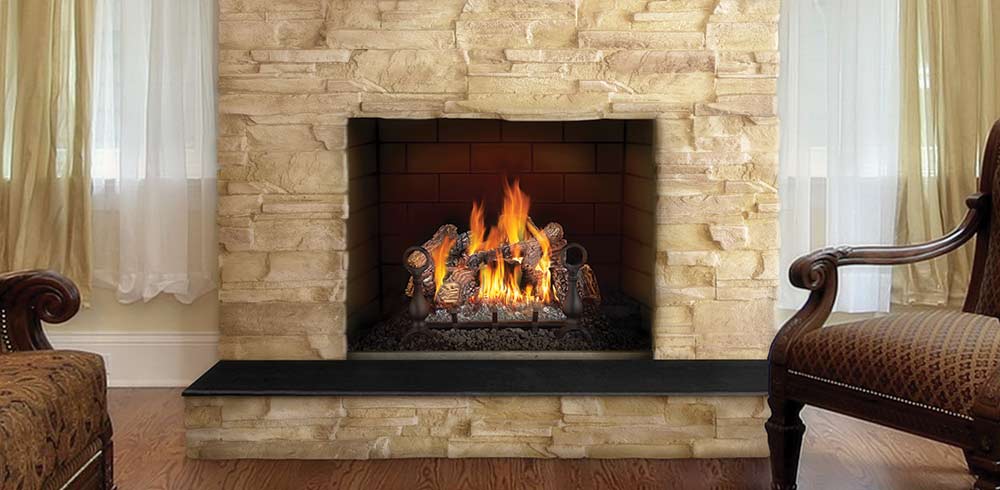
Are You Considering a Gas Log Set?
Decorative gas appliances, also known as gas log sets, can enhance any living space. And with modern design, a gas log set can look just as natural as a real wood-burning fireplace, but without the smoke or ash. However, gas logs arenât a one-size-fits-all solution, so weâre here to help you find the best option for your fireplace installation.
Here are some of the most common questions we get regarding gas fireplaces and gas log sets.
Do Gas Fireplace Logs Need to Be Vented?
There are two distinct options when it comes to gas logs: vented and ventless (or vent-free). Vented gas log sets require venting through a fully functional chimney. Ventless gas log sets do not require venting, just an approved firebox. Choosing the best option for your home is a little less straightforward because there is no better option. The best option for your installation will depend on how you intend to use the fireplace.

Vented gas log sets
Vented gas logs must be vented through a functional chimney in order to move all burning by-products outside the home. Vented gas logs produce the most realistic flames but put off less heat than their vent-free counterparts due mostly to the fact the chimney flue must be open when the fireplace is in use. This is why vented gas logs are usually considered decorative appliances, so if aesthetics are your primary concern when renovating a fireplace, a vented unit is likely your best choice.
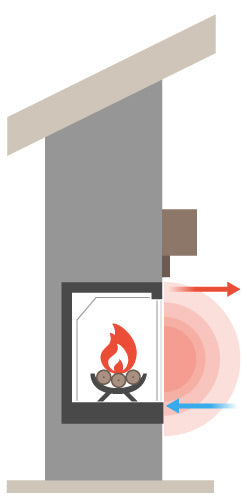
Vent-free gas log sets
Ventless gas logs do not require any special venting to use, only an approved firebox. As a result, these units can be used in an existing fireplace installation with the chimney flue closed or in installations with no chimney at all. Vent-free gas logs are the best option for heating due to the fact all heat is put back into the room and not lost up a chimney. Although uncommon, vent-free fireplaces are prohibited in some states and jurisdictions, so be sure to check your local building codes before installing a ventless fireplace or gas log set.
How Do Gas Fireplace Logs Work?
Burner System Components

Gas log sets feature several primary pieces no matter the installation. Nearly every unit includes the fireplace burner, burner pan, valve system and a decorative media material like fire glass, gas logs or shaped stones. Typically, these components are what make up a burner kit, though this may vary by brand.
There may also be additional accessories available for purchase, including ember bed enhancements or additional ceramic log pieces. However, not all accessories are compatible with all log sets. Be sure to read the ownerâs manual for your log set to determine if any of these additional components are available for your system.
Ignition Systems
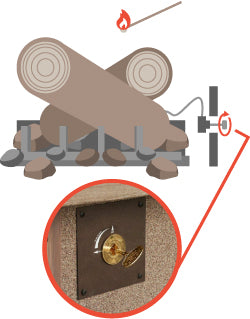
Non-Piloted Ignition Systems
Although not as common on modern gas log sets, non-piloted systems offer a very simple ignition option for a gas fireplace. These systems utilize a valve key to control gas flow, and all control is manual. When gas is released, a match or lighter is applied to ignite the fireplace. To extinguish the flames, the gas valve is returned to the off position.
Piloted Ignition Systems
Most gas log burners are piloted, similar to an appliance like a furnace. A pilot light system gives the burner the ability to shut off if no flame is present in order to prevent gas leaks. These systems can offer varied functionality depending on factors such as the construction budget and how the appliance will be used.
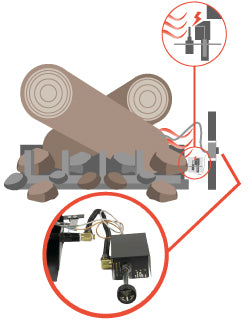
Manual Piloted Ignition Systems
These systems require the pilot light to be lit by hand. From there, the burner can be lit using a knob or valve to light the entire gas log set. These systems are easy to use and offer an added level of safety over a non-piloted manual ignition system.
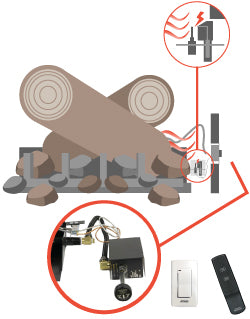
Manual Pilot with Remote or Switch
One slight upgrade over a simple manual piloted system is the addition of a remote or switch. These systems can involve a remote, a timer or a switch while maintaining the simplicity and safety of a manual piloted ignition system.
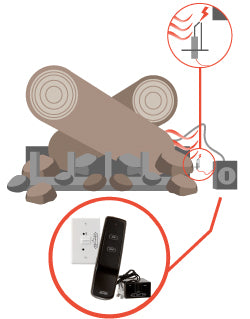
Electronic Ignition System
Electronic ignition systems offer the highest level of convenience for a gas fireplace or log set. This system uses batteries or hardwired electricity to first light the pilot light and in turn light the main burner with the simple push of a button. These systems are often referred to as IPI, or intermittent pilot ignition, because the pilot is no longer on at all times, but instead only when the entire burner is ignited.
Special Considerations for Ventless Gas Logs
What Makes Vent-Free Gas Logs Different?
Ventless gas logs are very similar to vented systems in their construction. In addition to the previously mentioned components, however, vent-free gas logs include an oxygen depletion sensor (ODS) to track the amount of oxygen in the air while the log set is in use. If oxygen drops below a certain level, this sensor shuts down the system to ensure safety.

Are Vent-Free Gas Logs Safe?
Ventless gas logs are a very safe option for your fireplace. These units go through rigorous testing and safety approval processes. In addition to these testing processes, the oxygen depletion sensor serves as a failsafe mechanism to ensure oxygen in the room always remains at safe levels. Always ensure your gas appliance is installed by a trained professional.
Still Have Questions about Gas Fireplace Log Sets?
We can answer any questions you may have about fireplaces and log sets. Give us a call to speak to one of our product experts. We can also help you decide on the best appliances for your particular installation.

